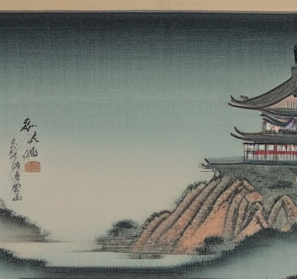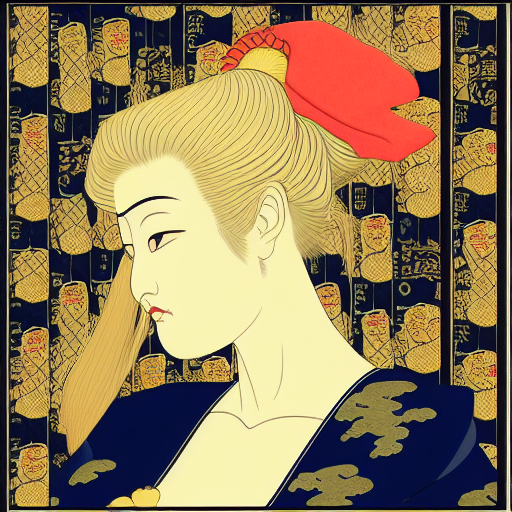The Drowning of Queen Pume of Nibadapta and her servant Verti
With a broken heart the princess drowned,her golden hair will never be rocked by the wind,her pale skin would never reflect the light of the moon, great was the tragedy of the Queen of Nibadapta, whose grief lead to her death, and her servant, Verti,with her, drawned, at the bottom of the lake he rest.
Background of the Myth:
In the 12th century BP, Seria wasn't a unified state, instead it was divided into multiple kingdoms. And one of the oldest and most powerful was the one centered at the city of Nibadapta. Here, the dynasty founded by King Piliusa launched campaigns as far as Shiruz in Northern Seria. The Kings of Nibadapta bored the title of Kings of the Great Delta for more than 150 years. But the dynasty came to an abrupt end with the death of the last king, Sagumaros III, while on campaign against the city of Tehiran (today Sakouramish). His wife, Pume, and his brother Wentil, became the regents of his 4 years old son and heir, who ruled as Sagumaros IV.
Wentil became thirsty for power, and in fact , he was the person who held real power, and manage to be appointed also Chancellor. He gained the loyalty of the army and the palace guards, and he issued a coup. He killed the young king, but failed to kill the queen, who barely scaped to the neighbouring city of Zanakasht, capital of the Kingdom of Wyla. Then he proclaimed himself King, and with the excuse of having the queen in that city, he declared war to king Asurlan of Wyla. This king send emissaries to the neighbouring kingdoms and formed a coalition. Wentil was defeated in battle and his capital besieged for 4 months. Finally the forces of the coalition, commanded by king Asurlan broke the walls and sacked and destroyed the city. It is said, that king Wentil was assasinated by a guard, loyal to queen, that said while stabbing him: Look at the fires in the city, this is the prize for your ambition!.
After this, legend says that the poor queen Pume could not bear the sadness of lossing both his beloved husband and son, and it is said that she commited suicide diving into the lake near the city, and that his servant Verti, also drowned trying to save the queen. In her memory King Asurlan built a monument in his honor, although today is lost. And after this event the lake became known as the Lake of Sorrows.
Local legend also says that each year, during the longest night of the year, you can see the spirit of the Queen walking around the lake asking those that walk nearby about their offspring, and, if they have children the queen blesses them and if they haven't , then she demands an offering of a child clothes placed into a basket and then put into the lake, so that the queen might dress her son in the afterlife. If they don't make this offering they and their families will be cursed forever, till the end of times. Also another variation of the legend says that the spirit of Verti can also be seen wandering around the lake asking people that passes by where the queen can be found.
Spread
The tragic death of Queen Pume, famous for its beauty and kindness was a terrible loss to both her subjects in Nibadapta and to the people of the city of Zanakasht, who empathysed with her loss and grief. Soon poems and songs remembering the tragedy of the Queen and the Royal Family of Nibadapta were composed across northern Seria. Most of them were then written centuries later in works like the "Book of the Old Kingdoms" (ca. 445 BP) or "Tales of the Five Princes" (ca.126 AP).
The first theatrical play ever performed in Seria was called "King Asurlan and the Revenge of the Queen" and was perfomed at the Silver Heron Theatre in Sakouramish in 26 AP.
Variations & Mutation
Variations of the myth are not directly related to Queen Pume herself, but with the other person that drowned in the lake, his servant Verti. Accoding to the mainstream tradition, Verti drowned because he wanted to save the Queen. In other texts he commited suicide after being told of his master's death, choosing to also die by drawning into in the lake and thus, accompany his beloved Queen in her resting place and also in the afterlife.
Cultural Reception
Queen Pume became both a symbol of female beauty and motherhood to the Seris but also as a symbol of tragedy, of lossing everything daring; her husband, her son, her kingdom and her own life.
In Art
Many paintings in Seris history have depicted the tragedy of Queen Pume and her servant. And also many portraits of the Queen has been painted across the Seris dynasties based on what the myth and songs tells us about how did she look like.
For example. a portrait of Queen Pume painted during the later years of the Sittakid Dynasty can be seen in one of the rooms at the Imperial Palace overlooking the Gardens of Comfort. It bears the signature of Arshak Yuranaru, a famous painter who worked at the court of Yüttak VII.

Old Seris painting of the Lake of Sorrows and the temple at the top of the Mountain by Callyxtus with Stable Diffusion
Also there not few the painters that decided to choose the Lake of Sorrows as the subject of their paintings, and from the late Arsakid dynasty till nowadays hundreds of paintings depicting the lake and the nearby temple can be found in both private and public collections
Date of First Recording
around 600-500 BP
Date of Setting
998 BP




Comments